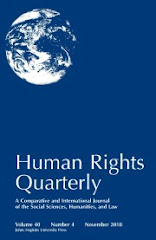The “Great Recession” has given way to a dizzying array of international agreements aimed at strengthening the prudential oversight and supervision of market participants. How these international financial rules operate is, however, deeply misunderstood. Theorists of international law view international financial rules as merely coordinating mechanisms in light of their informal “soft law” quality. Yet these scholars ignore the often steep distributional implications of financial rules that may favor some countries over others and thus fail to explain why soft law would be employed where losers to agreements can strategically defect from their commitments. Meanwhile, political scientists, though aware of the distributional dynamics of financial rule-making, rarely, if ever, examine international law as a category distinct from international politics. Law is instead cast as an inert, dependent variable of power, as opposed to an independent factor that can inform the behavior of regulators and market participants.This Article presents an alternative theory for understanding the purpose, operation and limitations of international financial law. It posits that international financial regulation, though formally “soft,” is a unique species of cross-border cooperation bolstered by reputational, market and institutional mechanisms that have been largely overlooked by theorists. As a result, it is more coercive than classical theories of international law predict. The Article notes, however, that these disciplinary mechanisms are hampered by a range of structural flaws that erode the “compliance pull” of global financial standards. In response to these shortcomings, the Article proposes a modest blueprint for regulatory reform that eschews more drastic (and impractical) calls for a global financial regulator and instead aims to leverage transparency in ways that more effectively force national authorities to internalize the costs of their regulatory decision-making.
Wednesday, January 27, 2010
Brummer: How International Financial Law Works (and How it Doesn't)
Chris Brummer (Georgetown Univ. - Law) has posted How International Financial Law Works (and How it Doesn't). Here's the abstract:





